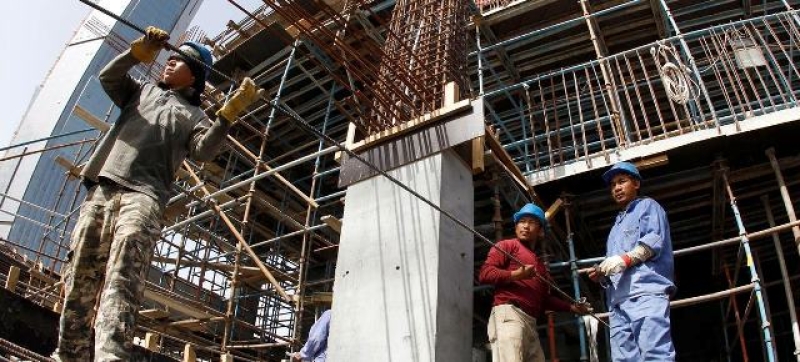- CA Yunus pays homage to Liberation War martyrs on Victory Day |
- Bangladesh capital market extends losing streak for second day |
- Bangladesh celebrates Victory Day Tuesday |
- 'Different govts presented history based on their own ideologies': JU VC |
Migrant workers indispensable to global economic growth: ILO

Migrant workers transport metal rods on a construction site in Qatar (file). © ILO-Apex Image
16 December 2024 - International migrants comprised 4.7 per cent of the labour force in 2022 – an indication of the crucial role they play in the global economy, the UN labour agency ILO said in a report published on Monday.
Some 167.7 million migrants were part of the labour force in their destination countries in 2022 – an increase of more than 30 million since 2013, according to the ILO Global Estimates on International Migrant Workers.
Of this number, 102.7 million were men and 64.9 million were women.
Regional distribution
Most migrants were concentrated in high-income countries, which accounted for more than 68 per cent of the overall total.
They were mainly drawn to three regions: Northern, Southern and Western Europe; North America and the Arab States.
The share living in Northern, Southern and Western Europe rose from 22.5 per cent in 2013 to 23.3 per cent in 2022, while the other two regions saw slight declines.
Gender disparities
The term “international migrants in the labour force” means that persons can be working or unemployed, and more than 155 million had jobs.
The ILO noted, however, that significant gender disparities persisted, as migrant women had an employment-to-population ratio of only 48.1 per cent, compared to nearly 73 per cent for their male counterparts.
Migrants also faced a higher unemployment rate compared to non-migrants, or 7.2 per cent versus 5.2 per cent. Again, women were more affected.
“This disparity may be driven by factors such as language barriers, unrecognized qualifications, discrimination, limited childcare options, and gender-based expectations that restrict employment opportunities, particularly for women,” the ILO said.
Further findings reveal that a significant portion of migrants, 68.4 per cent, were employed in the services sector – a trend largely driven by the global demand for care and domestic work, particularly among women.
Nearly 30 per cent of migrant women, and 12.4 per cent of men, were employed in these types of jobs, compared to 19.2 per cent of non-migrant women and 6.2 per cent of non-migrant men.
An ‘indispensable’ force
The report underscored the complexities of labour migration and the need for targeted policies to support international migrants.
With most of these workers employed in high-demand sectors, ensuring equitable access to employment opportunities must be a priority.
“Migrant workers are indispensable in addressing global labour shortages and contributing to economic growth,” said ILO Director-General Gilbert F. Houngbo.
“Ensuring their rights and access to decent work is not only a moral imperative but also an economic necessity.” – UN News

